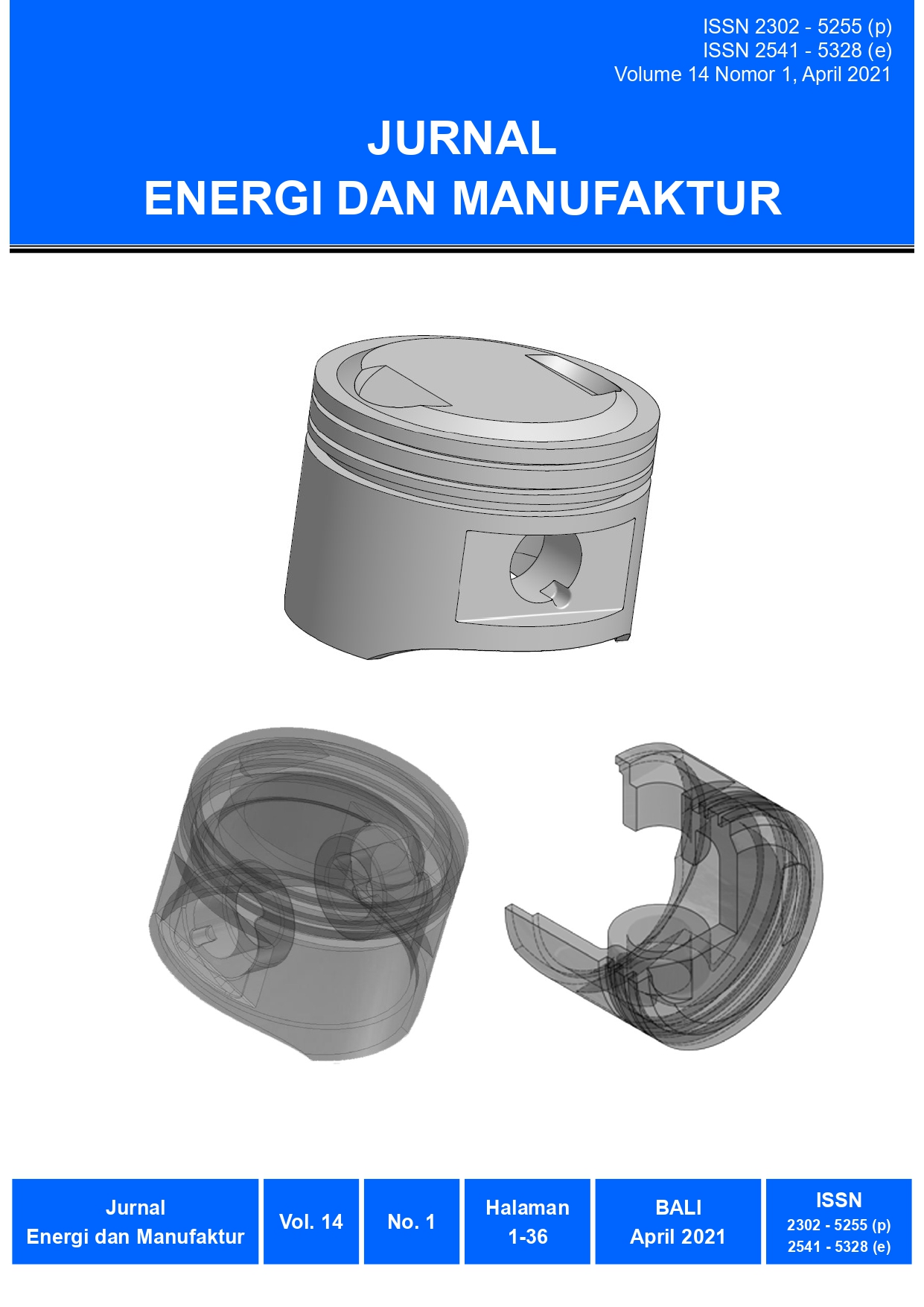Pengaruh kedalaman las pada pengelasan gesek puntir dua muka logam Magnesium AZ31
Abstract
Friction Stir Welding (FSW) categorized as solid-state welding method. The working principle of FSW is to utilize combination of rotation of tool and penetration force to produce heat energy which changes the workpiece phase to be semi-solid and make in possible to joined. Magnesium is a light metal that is widely used in aircraft, automotive, construction, and medical equipment components. In this study, AZ31 magnesium metal welding was joined by friction stir welding method which was applied to the upper and lower surfaces of the workpiece or called double side friction stir welding (DFSW). DFSW method aims to obtain joining without having to change the workpiece phase into a liquid, this is because magnesium is a metal with a low flame temperature characteristic. With the DFSW method, the potential for the workpiece to burn during the joining process can minimized better than joining by conventional welding methods that is fusion welding method. There are 3 variations of the depth of weld parameters that are applied in this study 1.6 mm, 3.6 mm, and 5.6 mm. From this research, it is known that the depth of weld factor greatly affects the quality of the resulting joints, based on testing it is known that the best results are obtained with a depth of weld of 5.6 mm.
Downloads
References
[2] Ibrahim, F. 2018. Pengaruh Bentuk Pin indentor Las Gessek Puntir (Friction Stir Welding) Terhadap Kualitas Hasil Lasan Magnesium AZ31. Skripsi. Universitas Lampung. Lampung.
[3] Marinov, V. 2010. “Manufacturing Technology”. Dubuque. Kendall Hunt Publishing Company.
[4] Prasetyana, D. 2016. “Pengaruh Kedalaman Pin (Depth Plunge) Terhadap Kekuatan Sambungan Las Pada Pengelasan Adukan Gesek Sisi Ganda (Double Sided Friction Stir Welding) Alumunium Seri 5083”. Skripsi. Teknik Mesin Universitas Muhammadiyah Surakarta. Solo.
[5] Santos, T., Vilaca, P., Quintino, L. 2007. “Developments in NDT for Detecting Imperfections in Friction Stir Welding in Alumunium Alloys”. Lisbon.
[6] Sudrajat, A. F. P. 2012. “Analisis Sifat Mekanik Hasil Pengelasan Alumunium AA 1100 Dengan Metode Friction Stir Welding (FSW)”. Fakultas Teknik Universitas Jember. Jember.
[7] Sukmana, I., Sustiono, A. 2016. “Pengaruh Kecepatan Putar Indentor Las Gesek Puntir (Friciton Stir Welding) terhadap kualitas pengelasan Alumunium 1100-H18”. Jurnal Mechanical. Vol. 7, No. 1, Hal 15-19.
[8] Budi Santoso, 2014. Pengaruh variasi waktu gesekan awal solder terhadap kekuatan tarik, kekerasan dan struktur makro Alumunium 5083 pada pengelasan friction stir welding. Tugas Akhir. Universitas Lampung. Lampung

This work is licensed under a Creative Commons Attribution-NonCommercial-ShareAlike 4.0 International License.









